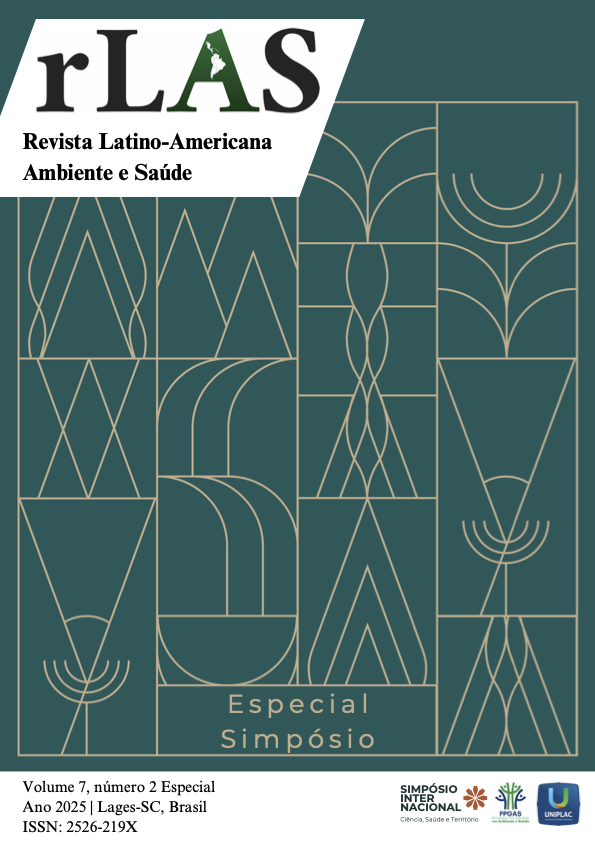Sound performance in accessible auditoriums for blind people
Keywords:
architectural acoustics, speech intelligibility, sensory accessibilityAbstract
This article discusses the role of acoustic parameters in creating sensorily inclusive auditoriums, focusing on the spatial experience of visually impaired individuals. In a field historically centered on vision, the research proposes sound as an architectural language and a tool for inclusion. For blind individuals, hearing is more than a means of communication—it is a tool for orientation, volumetric reading of space, and social interaction. The study combines simulations using the EASE Acoustics software and binaural auralization to evaluate both the technical aspects and the subjective listening experience within the environment. Parameters such as reverberation time (RT60), clarity index (C50), speech transmission index (STI), as well as Interaural Level Difference (ILD) and Interaural Time Difference (ITD) are considered, analyzing scenarios before and after acoustic interventions using carpets, absorbent panels, and reflectors. The results demonstrated reductions of over 60% in RT60 (500Hz), increases of up to 173% in C50, and significant improvement in STI, enhancing speech intelligibility, sound directionality, and the perception of spatial depth. These improvements broaden auditory perception and speech clarity for blind individuals in built environments. The research proposes specific acoustic performance guidelines focused on sensory accessibility, advocating for listening as a design criterion rather than merely a technical attribute. It reinforces the importance of acoustics as a structuring element of spatial experience for all, especially for those who listen to see. Thus, the research contributes to expanding the understanding of architectural accessibility, positioning acoustics as a critical dimension of contemporary inclusive design.
References
ABNT NBR IEC 60268-16:2018. Avaliação da inteligibilidade da fala. Rio de Janeiro: ABNT, 2018.
ABNT NBR ISO 3382-1:2017. Acústica. Medição de parâmetros acústicos de salas. Parte 1: Espaços de apresentação. Rio de Janeiro: ABNT, 2017
ARORA, Lauryn et al. A comprehensive review on NUI, multi-sensory interfaces and UX design for applications and devices for visually impaired users. Frontiers in Public Health, [s. l.], v. 12, p. 1357160, 2024.
BAKIR, Dina et al. The Spatial Experience of Visually Impaired and Blind: An Approach to Understanding the Importance of Multisensory Perception. Civil Engineering and Architecture, [s. l.], v. 10, n. 2, p. 644–658, 2022.
BUJACZ, Michał et al. Effectiveness of different sounds in human echolocation in live tests. PLOS ONE, [s. l.], v. 19, n. 10, p. e0306001, 2024.
CHO, Jun-Dong. Multi-Sensory Interaction for Blind and Visually Impaired People. Electronics, [s. l.], v. 10, n. 24, p. 3170, 2021.
FERNANDES JUNIOR, Antonio Carlos Lopes. Auralização: tecnicas de modelagem e simulação binaural de ambientes acusticos virtuais. 2005. (Mestrado em Engenharia Elétrica) Universidade Estadual de Campinas, Campinas, SP, 2005. Disponível em: https://repositorio.unicamp.br/Busca/Download?codigoArquivo=468995. Acesso em: 29 abr. 2025.
HIGGINS, Nathan C. et al. Evidence for cue-independent spatial representation in the human auditory cortex during active listening. Proceedings of the National Academy of Sciences, [s. l.], v. 114, n. 36, 2017. Disponível em: https://pnas.org/doi/full/10.1073/pnas.1707522114. Acesso em: 5 maio 2025.
HUDEC, Milan; SMUTNY, Zdenek. Advanced Scene Recognition System for Blind People in Household: The Use of Notification Sounds in Spatial and Social Context of Blind People. In: CSAE ’18: The 2nd International Conference on Computer Science and Application Engineering, 2018, Hohhot China. Proceedings of the 2nd International Conference on Computer Science and Application Engineering. Hohhot China: ACM, 2018. p. 1–5. Disponível em: https://dl.acm.org/doi/10.1145/3207677.3278101. Acesso em: 9 fev. 2025.
KOLARIK, Andrew J. et al. Auditory spatial representations of the world are compressed in blind humans. Experimental Brain Research, [s. l.], v. 235, n. 2, p. 597–606, 2017.
KOLARIK, Andrew J et al. Using Acoustic Information to Perceive Room Size: Effects of Blindness, Room Reverberation Time, and Stimulus. Perception, [s. l.], v. 42, n. 9, p. 985–990, 2013.
LEO, K. Speech Intelligibility Measurements in Auditorium. Acta Physica Polonica A, [s. l.], v. 118, n. 01, 2010.
PARK, Chan-Jae; HAAN, Chan-Hoon. Effect of the Inter-aural Level Differences on the Speech Intelligibility Depending on the Room Absorption in Classrooms. The Journal of the Acoustical Society of Korea, [s. l.], v. 32, n. 4, p. 335–345, 2013.
PARK, Chan Jae; HAAN, Chan Hoon. Effect of the inter-aural sound level differences on the speech intelligibility. The Journal of the Acoustical Society of America, [s. l.], v. 131, n. 4_Supplement, p. 3318–3318, 2012.


